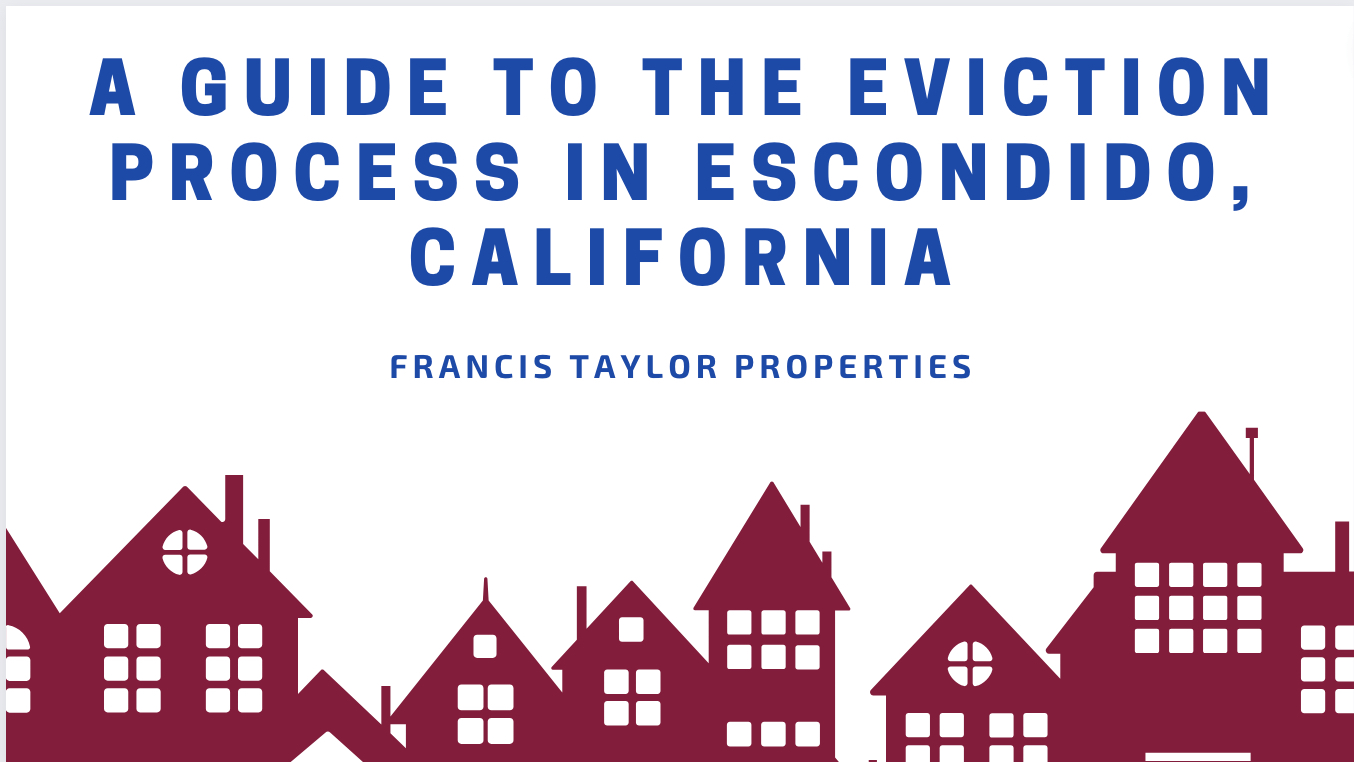California landlord-tenant laws give landlords the right to evict tenants for certain lease violations. Including, not paying rent on time, not abiding by the terms of the lease, and engaging in criminal activity.
That said, a landlord must carry out the process in adherence with state laws. You must not try to evict the tenant in any other way other than specified under state law. For instance, locking out the tenant, removing their personal belongings from the unit, or shutting down their utilities to make the tenants leave.
In today’s blog, we’ll walk you through everything you need to know regarding the eviction process in California.
What’s the California Eviction Process?
Removing a tenant from their rented premises, per California eviction law, requires a landlord to follow certain laid down procedures. The following is a basic overview of what a landlord must do.
- Have a “just cause” for eviction. Examples of just causes for tenant eviction in California include unpaid rent, failing to vacate the premises after the lease expires, and violating a term of the lease or rental agreement.
- Serve the tenant with an eviction notification. A landlords must use the right written notice that is relevant to the violation the tenant has committed. For example, to evict a tenant who didn’t pay rent when it was due, the landlord must serve the tenants a 3-day Notice to Quit.
- File an eviction lawsuit against the tenant. Landlords can do this by filing an Unlawful Detainer with the Superior Court of your county.
- Attend the hearing. If the judgment is made in your favor, the court will issue the landlord with the order authorizing the removal of the tenant from your California property.

Expect this process to take around 5 to 8 weeks to complete. It may also take longer, especially if the tenant decides to fight their removal or requests a continuance.
Types of Eviction Notices
As already mentioned, California landlords ought to have a legal cause to evict a tenant. A landlord must then serve the tenant the appropriate document depending on the legal cause. This is different from when a tenant breaks their lease early.
The following summarizes the type of eviction document a landlord must serve for a certain legal cause under California law.
3-Day Notice to Quit
Legal cause to serve this notice is failure to pay rent when it was due.
30/60-Day Notice to Vacate
The legal cause to serve is the expiry of the lease agreement. If the tenant has lived on the property for less than a year, a landlord must serve the tenants a 30-day Notice to Vacate. If the tenant has lived on the property for more than a year, the landlord must serve the tenants a 60-day Notice to Vacate.
3-Day Notice to Perform Covenants or Leave
Legal cause to serve this notice is a violation of the lease or rental agreement. For instance, subletting the premises without the express permission from the landlord.
3-Day Notice to Vacate
Legal cause to serve this notice engaging in illegal activity on the premises. For instance, prostitution, nuisance, or using a deadly weapon.

If the tenant doesn’t fix the violation or move out within the notice period, as the landlord you can move to court and file an Unlawful Detainer lawsuit.
Serving a Tenant with an Eviction Notice in California
Landlords must serve the eviction papers to a tenant properly. The following are the options landlords has when doing so.
- Handing the notice to the tenant in person
- Leaving a copy with a person of a suitable age and mailing another copy to the tenant’s address. Ask for a return receipt if using a mail service
- Post a notice on the front door or any other conspicuous place on the premises
Tenant Eviction Defenses in California
In California, just like in most states, tenants have a right to file a formal, written answer to an eviction complaint. A legal eviction defense can enable the tenant to stop further eviction proceedings against the tenants.
The following are examples of tenant eviction defenses in California
- They were served with an improper notice. For instance, in the case of lease violation, the landlords served the tenants with a 3-day Notice to Quit rather than a 30/60-day Notice to Leave.
- The landlords failed to maintain the unit to a habitable standard which led the tenant to withhold rent payments
- The eviction was a retaliatory tactic after the tenant exercised a legal right. Such as complaining about code violations to the local government health agency.
- The eviction was due to the tenant’s race, color, religion, nationality, or any other protected class
- The landlord tried to remove the tenant through “self-help” methods. For instance, locking the tenants out or removing their personal belongings from the unit.
Attending a Court Hearing
After filing an Unlawful Detainer with the court, per the California eviction law, a hearing will be scheduled. This will be not later than 20 days after the filing.

Of course, make sure that as the landlord you come properly prepared by bringing all important documentation to court. Including, a copy of the lease agreement, a copy of the proper notice, and any other supporting evidence. This includes the security deposit.
If the judgment falls in your favor, the court will issue you with a Writ of Execution. This is a court order authorizing the sheriff to return possession of the rental unit to you.
Writ of Execution
A writ of execution is the tenant’s final notice to move out of the property. It gives the tenant only 5 days to remove their possessions from the rental unit. If they don’t, the sheriff will have no other option but to forcibly evict the tenant.
Unlike in some other states, filing an appeal against a writ of execution doesn’t stop an eviction in California. The only way the tenant may be able to stop their removal after the writ is issued is by requesting a Stay of Execution.
Bottom Line
Removing a tenant from their rented premises in California isn’t as easy as locking the tenants out or removing their personal belongings. It requires a landlord to follow a certain set of rules. If you need help evicting a tenant or are seeking help in the overall management of your rental property, Francis Taylor Properties can help. Get in touch today to get started!



